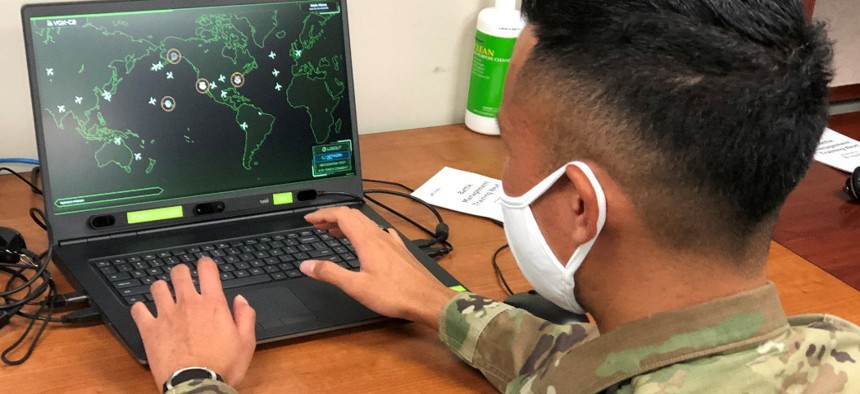AI Algorithms Could Rapidly Deploy to the Battlefield Under New Initiative

U.S. Air National Guard photo by Maj. Kimberly D. Burke
The Joint Artificial Intelligence Center’s director shed new light on its AI and Data Accelerator this week.
The Pentagon’s Joint Artificial Intelligence Center recently started building a joint operating system and integration layer that combatant commands and other military components could eventually use to rapidly make and field artificial intelligence algorithms.
This work is one key piece of the center’s new Artificial Intelligence and Data Accelerator, or AIDA, JAIC Director Lt. Gen. Michael Groen confirmed this week during the NDIA 2022 Expeditionary Warfare Conference.
“AIDA brings us, in small teams, out to the combatant commanders—now, for those of you who have been in combatant commands, or you're familiar with that environment—combat commanders have all of the challenges, all the problems and only some capability, right? And so what we're trying to do from an information advantage perspective is bring them the advantages of good data and good artificial intelligence-generating insights,” he explained.
Launched last year by Deputy Defense Secretary Kathleen Hicks, AIDA marks a broad initiative to boost data-based decision-making across the military’s 11 combatant commands.
During the panel, Groen noted that his office has already kicked off work with all those commands to help them shape and curate their data environments. And in developing this new integration layer, they aim to make AI algorithm-sharing and usage easier for the military officials involved.
“Throughout AIDA, [we hope] to illuminate what's possible,” Groen said, and “do lots of experiments within their data environments to help them make sense of their environments more clearly.”
In his view, it’s imperative for the United States to organize innovation enough right now to be competitive against strategic competitors—and particularly China—down the line.
“If you're not tracking, 2027 and 2030 are really important dates for the Chinese Communist Party—and 2027, especially, for the People's Liberation Army. They hope to achieve a modern-ready force in the PLA by 2027. Then, the Chinese Communist Party expects or hopes to be dominant in [AI] by 2030,” Groen said. “And if those two dates and those two things don't kind of make you sit up in your chair, then you're not paying attention.”






